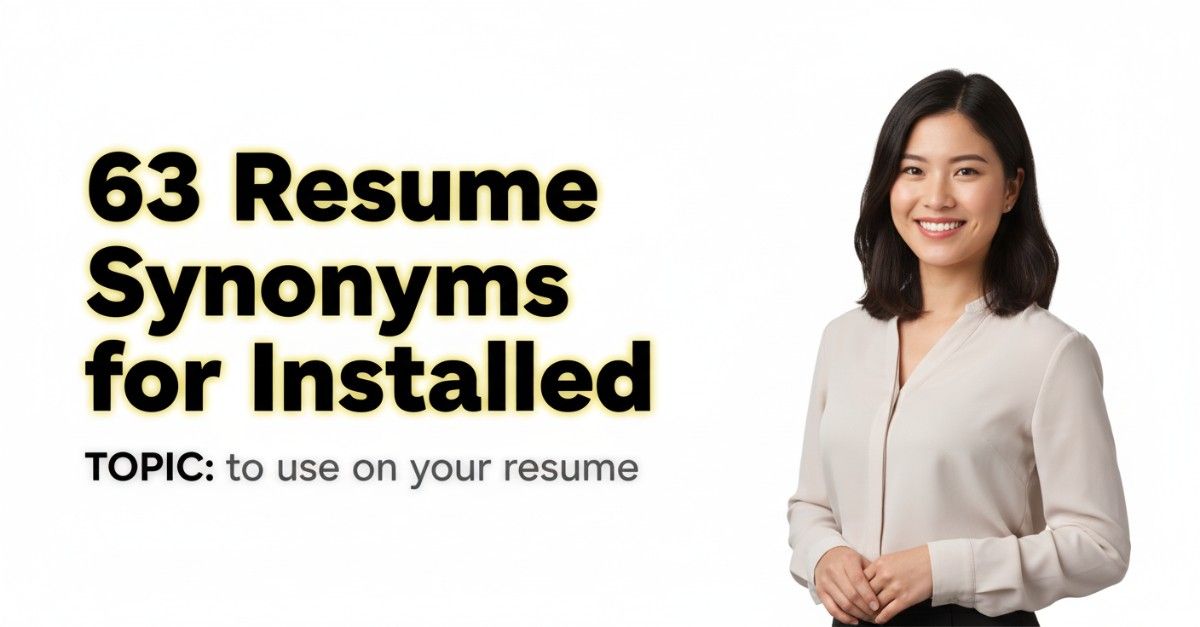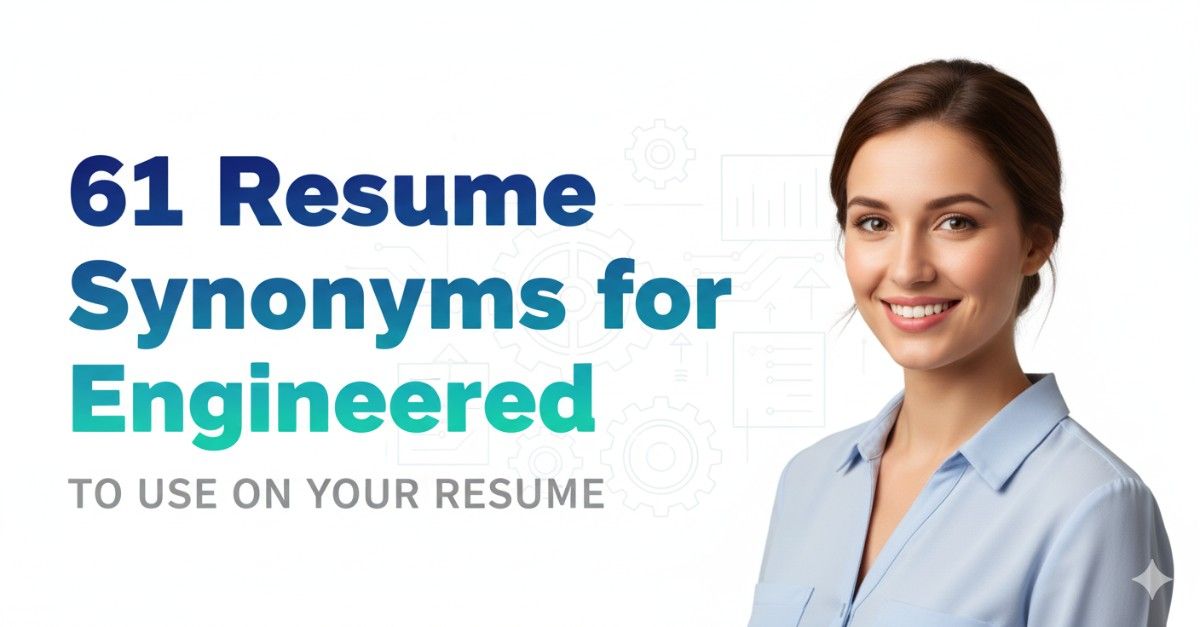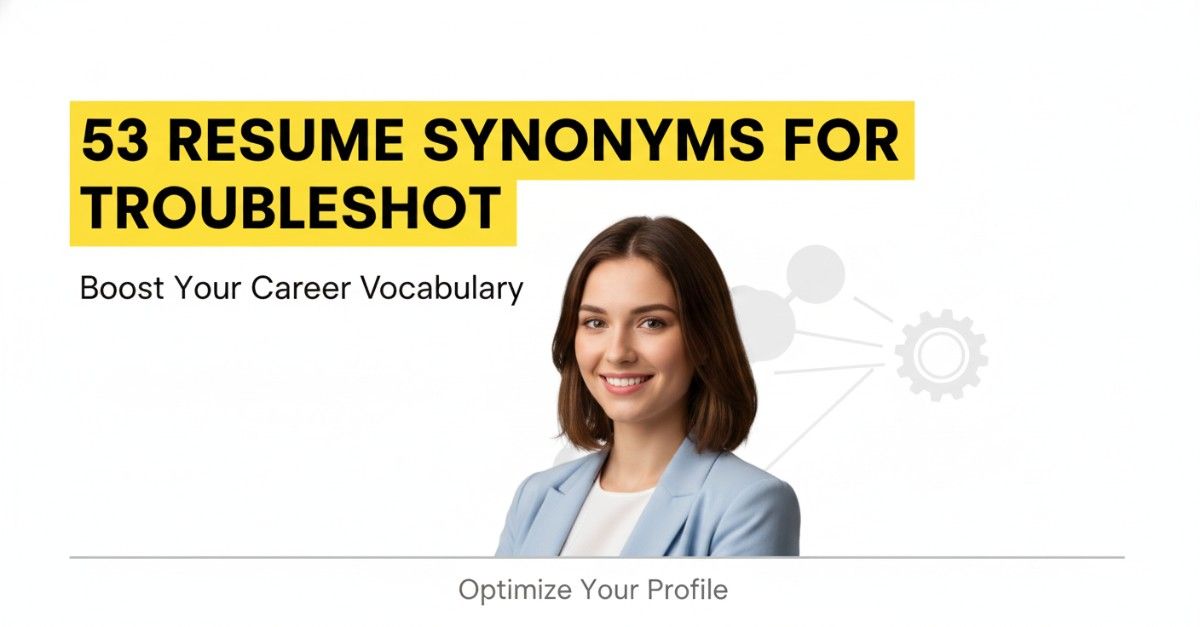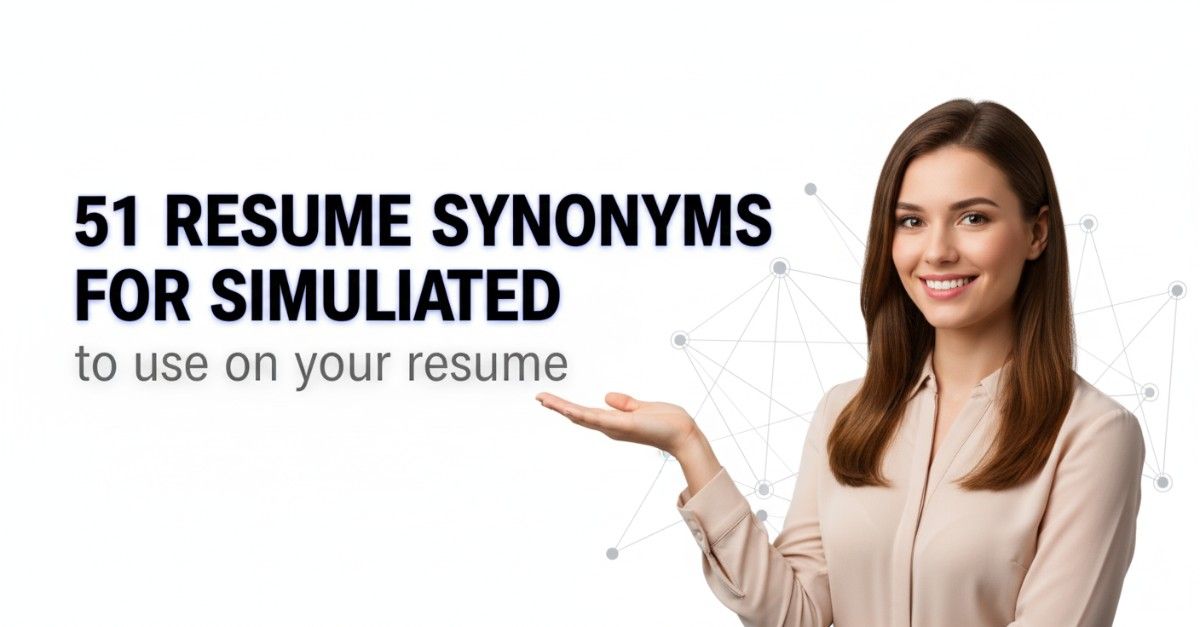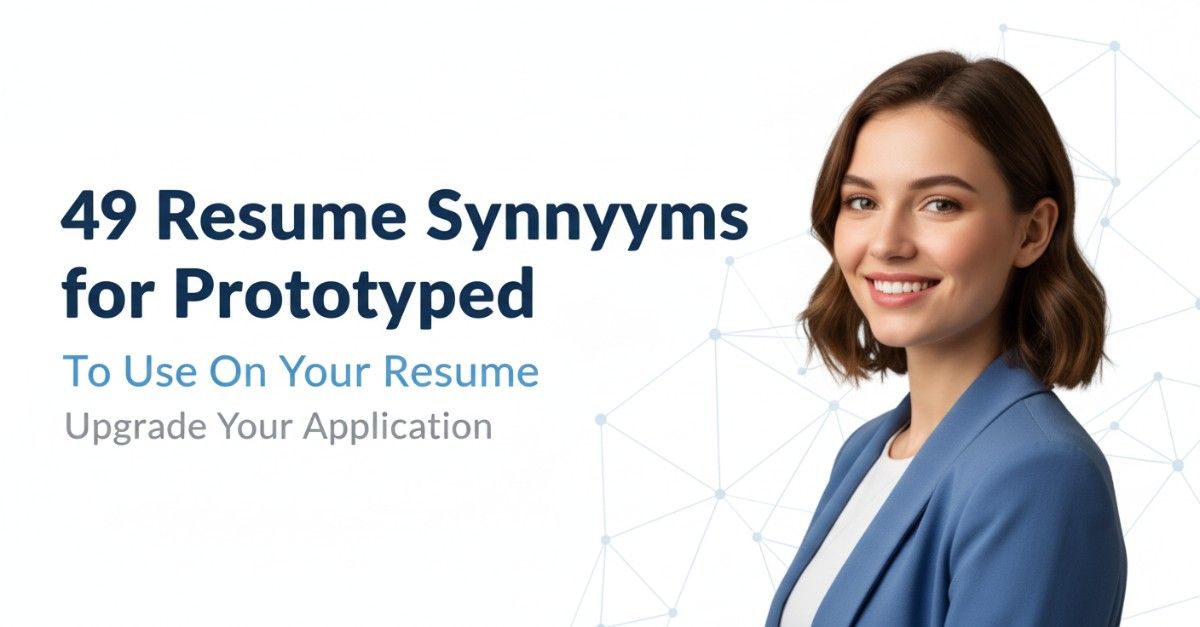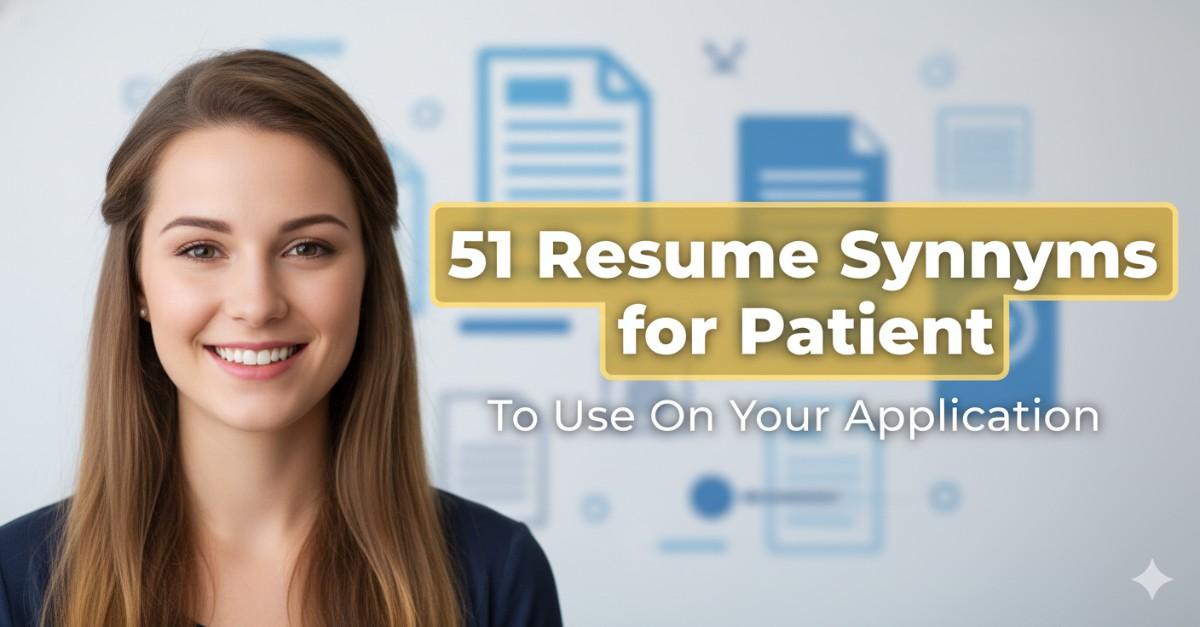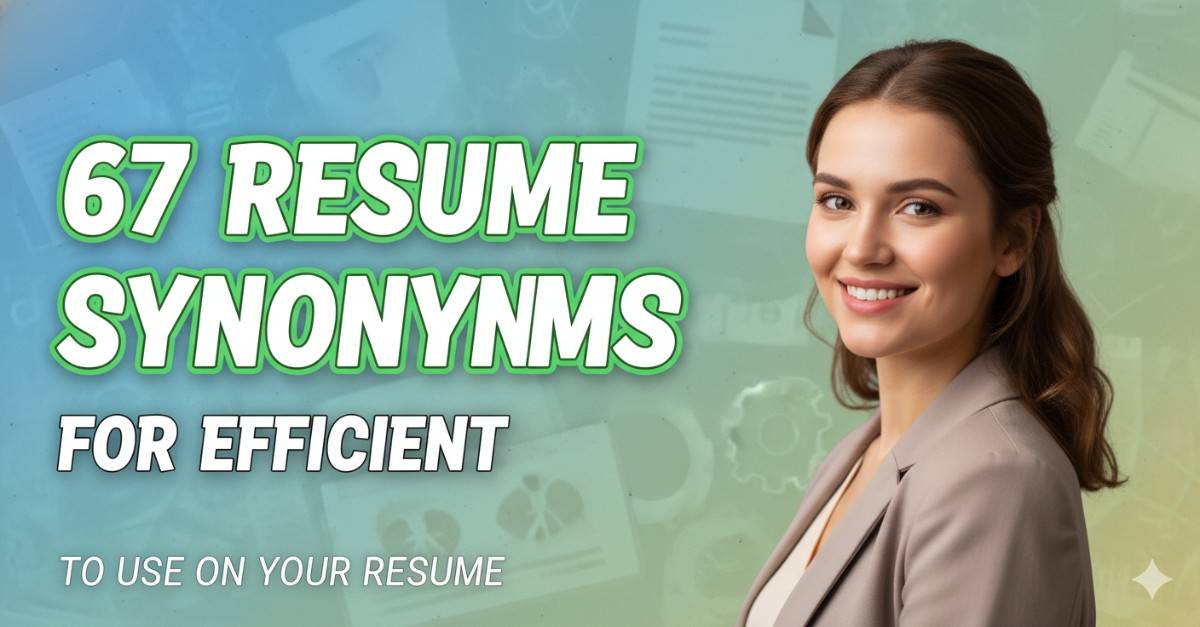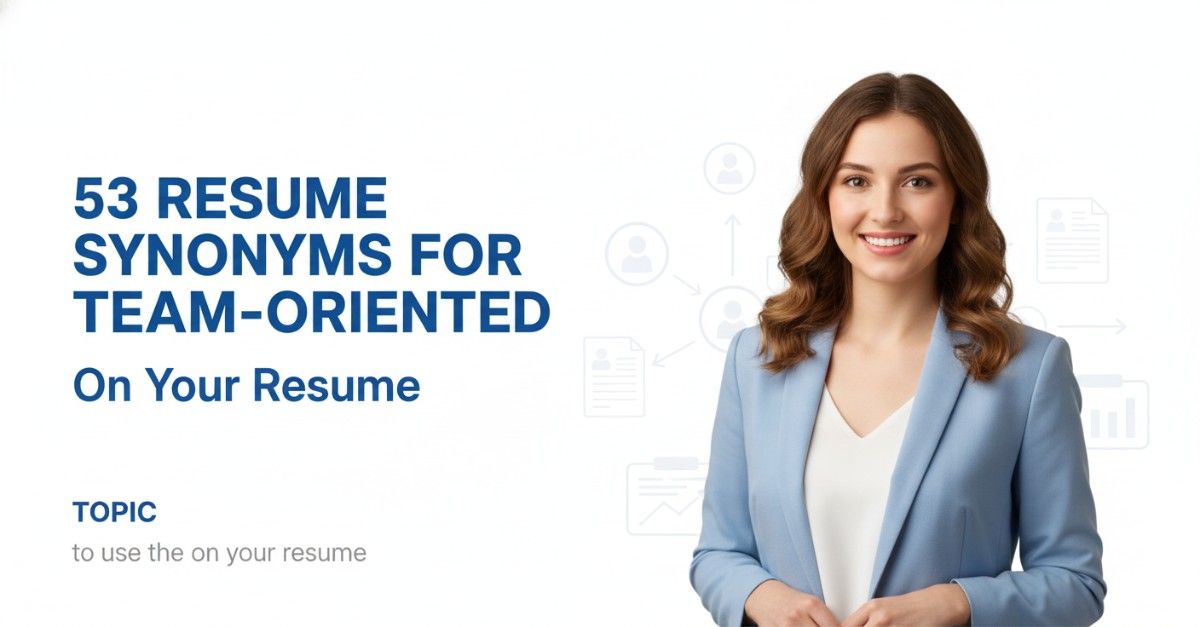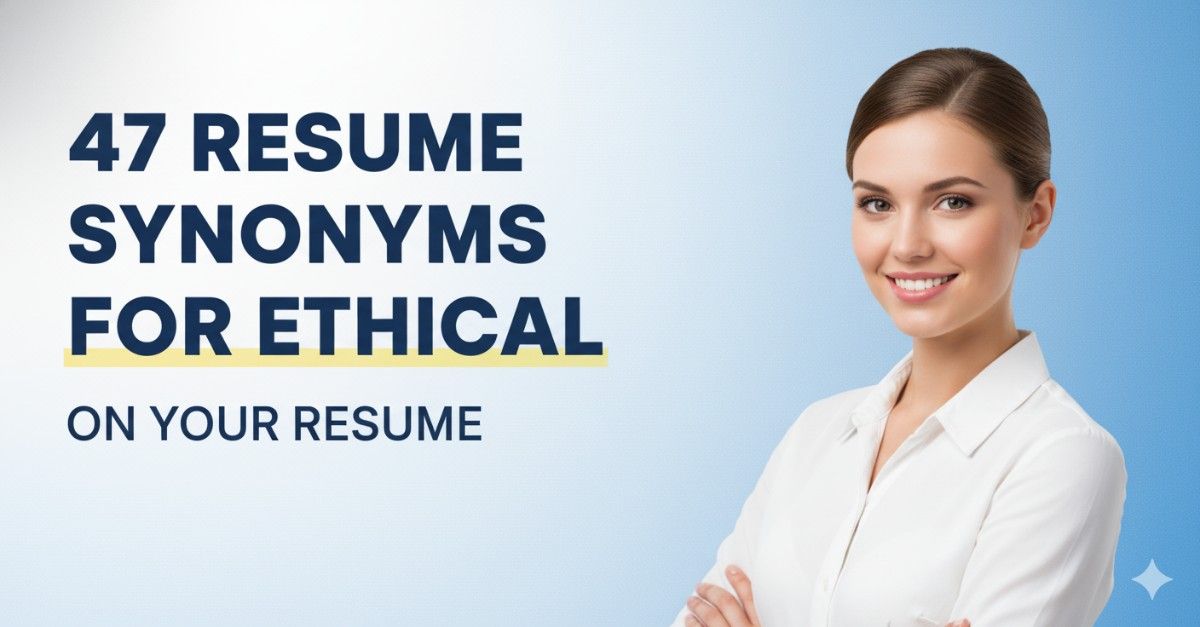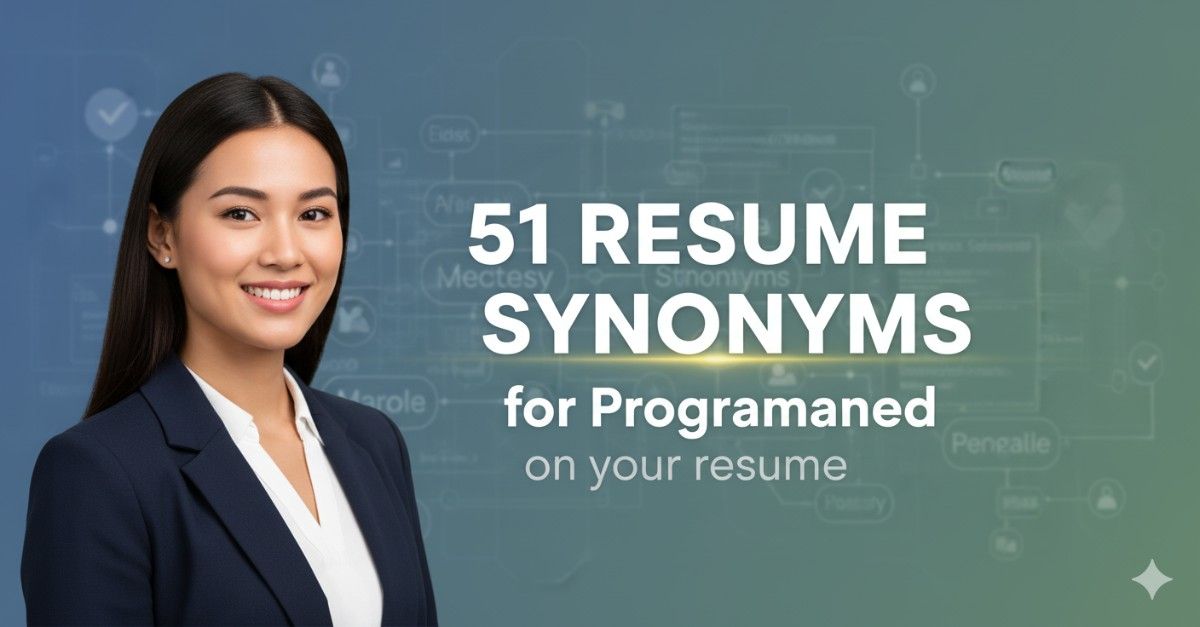
51 Resume Synonyms for Programmed To Use On Your Resume
Using the term “programmed” on resumes has become increasingly common, leading to its overuse in the competitive job market. While it effectively conveys technical expertise, relying on this single word can limit the perception of your skills and experiences. Recruiters often see countless resumes with repetitive language, which suggests a lack of creativity and fails to highlight the nuanced abilities that make an applicant unique. Varied vocabulary is essential, as it not only captures the attention of hiring managers but also reflects a deeper understanding of your field. By incorporating synonyms, you can better articulate your achievements and demonstrate the breadth of your capabilities. This comprehensive guide will explore the significance of varied language in resume writing, offer alternatives to “programmed,” and provide tips on how to effectively integrate these synonyms to enhance your resume. This approach will ensure you stand out in a sea of applicants, showcasing your individuality and creativity while articulating your qualifications with precision.
- Why Synonyms for “Programmed” Matter on Your Resume
- The Complete List: 51 Resume Synonyms for Programmed
- Strategic Synonym Selection by Industry
- Power Combinations: Advanced Synonym Usage
- Common Mistakes to Avoid
- Quantification Strategies for Maximum Impact
- Industry-Specific Example Sentences
- Advanced ATS Optimization Techniques
- Tailoring Synonyms to Career Level
- The Psychology of Leadership Language
- Final Best Practices
- Key Takeaways for Strategic Synonym Usage
- Frequently Asked Questions
- How many different synonyms should I use in one resume?
- Can I use the same synonym multiple times if it fits different contexts?
- Should I always replace ‘Programmed’ with a synonym?
- How do I know which synonym is most appropriate for my industry?
- Do synonyms really make a difference in getting interviews?
- Related Resume Synonym Guides
Why Synonyms for “Programmed” Matter on Your Resume
Using synonyms for ‘Programmed’ on resumes is crucial for several reasons. First, the repetitive use of the term can lead to monotony and predictability, causing your resume to blend in with the 70% of professional resumes that feature it. This lack of variety may result in missed opportunities to showcase specific skills and accomplishments, reducing the overall impact of your application. Furthermore, employing diverse language enhances ATS optimization, as these systems often prioritize varied keywords that align with job descriptions. By incorporating dynamic synonyms, you create narratives that are not only engaging but also clearly demonstrate your unique qualifications and experiences. This strategic approach can set you apart from other candidates, making your resume memorable to hiring managers and increasing your chances of securing an interview.
The Complete List: 51 Resume Synonyms for Programmed
Here’s our comprehensive collection of “Programmed” alternatives, organized for easy reference:
| Synonym | Best Context | Professional Level |
|---|---|---|
| Coded | Software Development | Entry-level |
| Developed | Application Development | Mid-level |
| Engineered | Systems Engineering | Senior |
| Designed | Product Development | Mid-level |
| Configured | IT Solutions | Mid-level |
| Automated | Process Improvement | Mid-level |
| Created | Web Development | Entry-level |
| Built | Infrastructure Development | Senior |
| Executed | Project Management | Mid-level |
| Implemented | Change Management | Senior |
| Facilitated | Team Collaboration | Mid-level |
| Orchestrated | Project Coordination | Senior |
| Established | Framework Development | Executive |
| Integrated | System Integration | Senior |
| Modified | Software Maintenance | Mid-level |
| Refined | Process Optimization | Senior |
| Directed | Technical Leadership | Executive |
| Customized | Client Solutions | Mid-level |
| Architected | System Architecture | Senior |
| Executed | Software Deployment | Mid-level |
| Produced | Content Management | Entry-level |
| Formulated | Strategic Planning | Senior |
| Innovated | Product Development | Senior |
| Optimized | Performance Tuning | Mid-level |
| Shaped | Project Vision | Senior |
| Crafted | Custom Solutions | Mid-level |
| Tested | Quality Assurance | Entry-level |
| Established | Operational Procedures | Executive |
| Assessed | Risk Management | Senior |
| Streamlined | Workflow Improvement | Mid-level |
| Evaluated | Performance Reviews | Mid-level |
| Upgraded | System Enhancements | Mid-level |
| Oversaw | Project Oversight | Senior |
| Monitored | System Performance | Mid-level |
| Collaborated | Cross-functional Teams | Mid-level |
| Administered | Database Management | Mid-level |
| Coordinated | Project Scheduling | Mid-level |
| Directed | Technical Initiatives | Executive |
| Led | Team Leadership | Senior |
| Conceptualized | Product Ideation | Mid-level |
| Specified | Requirements Definition | Senior |
| Generated | Data Analysis | Entry-level |
| Validated | Data Integrity Checks | Mid-level |
| Enhanced | User Experience | Mid-level |
| Streamlined | Business Processes | Senior |
| Defined | Scope of Work | Senior |
| Projected | Future Planning | Executive |
| Documented | Technical Writing | Entry-level |
| Configured | Network Settings | Mid-level |
| Facilitated | Workshops | Mid-level |
| Streamlined | Resource Allocation | Senior |
| Transitioned | Legacy Systems Migration | Senior |
| Communicated | Stakeholder Engagement | Mid-level |
| Devised | Creative Solutions | Senior |
| Engaged | Client Relationships | Mid-level |
| Leveraged | Technical Resources | Senior |
Strategic Synonym Selection by Industry
Strategic synonym selection is crucial for tailoring resumes to specific industries. Choosing the right terminology not only enhances readability but also demonstrates a deep understanding of industry nuances.
- Technology: Synonyms such as “innovation,” “agile,” and “scalability” resonate well. Technology companies value innovation and systematic thinking, so using these terms highlights a candidate’s adaptability and forward-thinking mindset.
- Healthcare: Preferred synonyms include “collaborative care,” “patient-centric,” and “evidence-based.” The healthcare sector emphasizes precision and collaborative care, showcasing a commitment to quality and teamwork in improving patient outcomes.
- Finance: Terms like “risk management,” “financial modeling,” and “compliance” are essential. The finance industry prioritizes accuracy and regulatory adherence, making these synonyms effective in conveying a candidate’s expertise in navigating complex financial landscapes.
- Consulting: Synonyms such as “strategic planning,” “stakeholder engagement,” and “data analysis” are impactful. Consulting firms look for candidates who can provide insights and drive business improvement, making these terms vital in demonstrating analytical and interpersonal skills.
- Manufacturing: Key terms include “lean methodology,” “process optimization,” and “quality assurance.” The manufacturing sector focuses on efficiency and quality control, so these synonyms reflect a candidate’s ability to enhance operational performance.
Build your resume in just 5 minutes with AI.
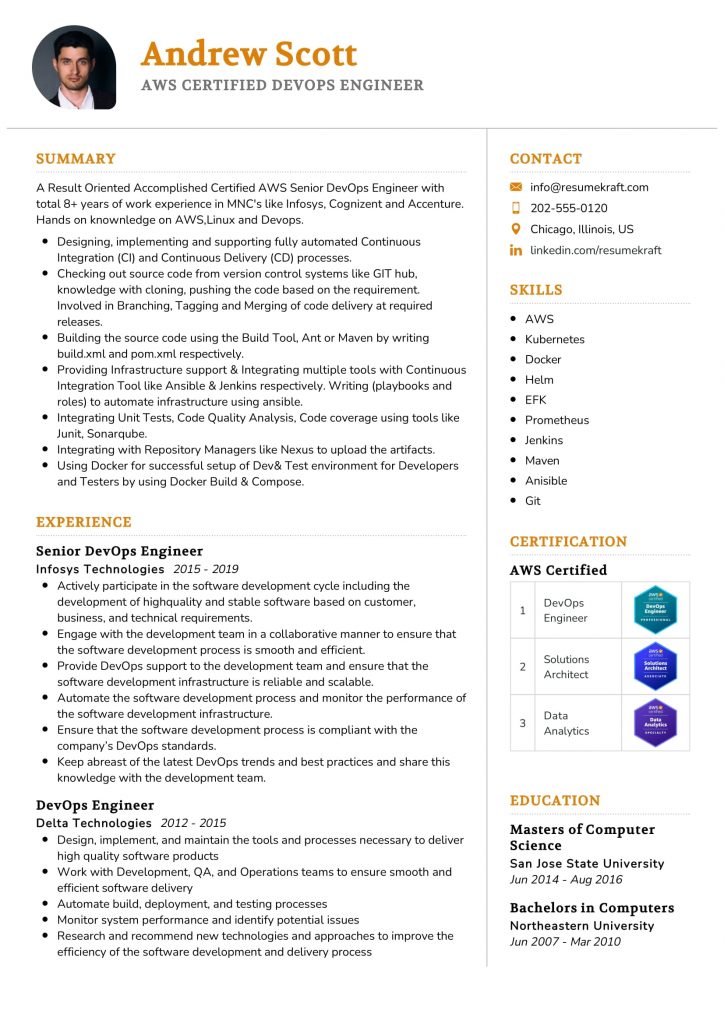
Power Combinations: Advanced Synonym Usage
Advanced synonym usage and power combinations can significantly enhance the impact of your resume. This approach includes several strategies to convey your experience effectively.
1. The Progressive Leadership Narrative emphasizes career advancement by using increasingly sophisticated synonyms. For example, instead of stating “led a team,” you can say “spearheaded cross-functional initiatives,” demonstrating leadership evolution and strategic influence.
2. The Industry Transition Strategy involves using synonyms to translate experience when moving between industries. For instance, if you worked in customer service, you might describe your role as “client relationship management,” showcasing relevance in a new field like sales.
3. Context-Specific Matching is about selecting synonyms that fit the situation. For example, in a technical role, instead of “solved problems,” you could say “engineered robust solutions,” which aligns with the industry’s language and expectations.
By employing these strategies, you create a compelling narrative that resonates with hiring managers and ATS systems alike.
Common Mistakes to Avoid
When using synonyms for “programmed,” it’s crucial to avoid common mistakes that can undermine your resume’s effectiveness.
Oversaw and orchestrated the entire software development process.
Developed and implemented software solutions to improve efficiency.
Executed a strategy to code the application.
Designed and built a user-friendly application interface.
Programmed, programmed, and programmed some more.
Programmed, tested, and deployed multiple software applications.
Quantification Strategies for Maximum Impact
- Team-Focused Synonyms: When using leadership synonyms like “led,” quantify your impact by including the number of team members, the duration of the project, and the outcomes achieved. For example, “Led a team of 10 over 6 months to improve customer satisfaction scores by 25%.” This not only illustrates leadership but also highlights tangible results.
- Project-Focused Synonyms: Use terms like “managed” and enhance them with project value, timeline, and success metrics. For example, “Managed a $500,000 marketing campaign over 3 months, resulting in a 30% increase in lead generation.” This provides concrete evidence of your capability in managing significant projects.
- Strategic-Focused Synonyms: When using synonyms such as “orchestrated,” include before/after metrics and the scope of the impact. For instance, “Orchestrated a new operational strategy that reduced costs by 15% and improved delivery times from 10 to 7 days across a regional network.” This demonstrates strategic thinking and the effectiveness of implemented changes.
Industry-Specific Example Sentences
- Technology: Developed a mobile application that increased user engagement by 40% within six months, enhancing overall user experience through intuitive design.
- Technology: Engineered a cloud-based solution that reduced data retrieval time by 50%, significantly improving operational efficiency across departments.
- Technology: Automated a series of backend processes using Python scripts, resulting in a 30% decrease in system downtime and a 25% increase in productivity.
- Technology: Created an interactive web platform that attracted over 10,000 users in its first quarter, fostering a vibrant online community.
- Healthcare: Designed a patient management system that streamlined appointment scheduling, reducing wait times by 35% and increasing patient satisfaction ratings.
- Healthcare: Constructed a data analytics tool that identified trends in patient outcomes, leading to a 20% improvement in treatment efficiency over one year.
- Healthcare: Customized a telehealth solution that expanded access to care for 1,500 patients in underserved areas, improving health outcomes significantly.
- Healthcare: Formulated a digital records system that enhanced data accuracy by 90%, minimizing errors in patient documentation and care delivery.
- Business/Finance: Established a financial forecasting model that improved budget accuracy by 25%, enabling informed decision-making for resource allocation.
- Business/Finance: Crafted a risk assessment tool that identified potential investment pitfalls, leading to a 15% increase in portfolio performance over 12 months.
- Business/Finance: Devised a customer relationship management system that boosted client retention rates by 30%, enhancing overall company profitability.
- Business/Finance: Initiated an automated reporting system that cut down report generation time by 40%, allowing for quicker strategic planning sessions.
- Education: Developed an e-learning platform that increased student enrollment by 50%, providing flexible learning solutions and improving overall academic performance.
- Education: Created a curriculum enhancement program that raised student engagement levels by 60%, fostering a more interactive classroom environment.
- Education: Structured a mentorship initiative that resulted in a 25% improvement in student graduation rates over three years.
- Education: Implemented a data-driven assessment system that accurately tracked student progress, leading to personalized learning plans and a 20% increase in test scores.
Advanced ATS Optimization Techniques
To optimize your resume for Applicant Tracking Systems (ATS), employing effective synonym usage is essential. One technique is the Keyword Density Strategy, which involves using 2-3 different synonyms per job role. For instance, if your role includes “project management,” you might also incorporate “project coordination” and “project oversight” throughout your resume to maintain keyword density without redundancy.
Another strategy is Semantic Clustering, where you group related synonyms to enhance thematic relevance. For example, if you are in sales, consider using terms like “sales growth,” “revenue generation,” and “client acquisition” together in your accomplishments to create a strong narrative.
Lastly, Job Description Matching is crucial. Analyze job postings and incorporate similar synonyms from them. If a job description mentions “team leadership,” ensure your resume reflects this with variations like “team management” or “leadership skills.” This approach increases your chances of passing through ATS filters by aligning closely with the language used by employers.
Tailoring Synonyms to Career Level
When tailoring synonyms to career levels, it’s essential to align language with the expectations of each role.
- Collaborated: Highlights teamwork and support.
- Assisted: Indicates willingness to learn and contribute.
- Participated: Suggests engagement in group activities.
- Facilitated: Shows capability in supporting processes.
- Learned: Emphasizes adaptability and eagerness to grow.
Using collaborative language reflects a readiness to integrate into teams and absorb knowledge.
- Directed: Conveys authority and leadership.
- Oversaw: Implies responsibility for team performance.
- Led: Denotes initiative in guiding projects.
- Coordinated: Suggests ability to manage complex tasks.
- Implemented: Shows capability in executing plans effectively.
Words that denote management and leadership resonate with the expectations of responsibility and accountability.
- Strategized: Reflects high-level planning and foresight.
- Transformed: Indicates significant change and impact.
- Championed: Suggests advocacy for innovation and progress.
- Orchestrated: Implies coordination of multiple elements for success.
- Visioned: Conveys the ability to foresee industry trends.
Using strategic language speaks to the weight of decision-making and the transformative influence expected at this level.
The Psychology of Leadership Language
The language of leadership plays a pivotal role in how candidates are perceived by hiring managers. Choosing the right synonyms can trigger distinct psychological responses in the hiring process.
- Action-Oriented Words: Terms like “achieve,” “execute,” and “drive” suggest a results-focused leadership style, appealing to managers who prioritize outcomes and accountability.
- Collaborative Words: Words such as “collaborate,” “unite,” and “partner” indicate strong team-building skills, resonating with organizations that value teamwork and a collective approach.
- Innovation Words: Utilizing words like “innovate,” “strategize,” and “envision” conveys a capacity for strategic thinking, attracting companies that encourage forward-thinking and creativity.
- Nurturing Words: Phrases like “mentor,” “support,” and “develop” reflect a focus on people development, appealing to firms that prioritize employee growth and a positive workplace culture.
Hiring managers are likely to respond positively to candidates whose word choices align with their company culture, making the strategic use of synonyms crucial for effective communication.
Final Best Practices
To effectively use synonyms in your resume, adhere to the 60-Second Rule: ensure your resume tells a compelling story that can be conveyed in about a minute. Focus on impactful language that showcases your achievements while remaining concise and relevant.
Implement the Mirror Test by reading your resume aloud. The language should flow naturally, reflecting your speaking style. If it feels forced, reconsider your word choices to ensure authenticity.
Engage in a Peer Review by asking trusted colleagues to review your synonym choices. Their feedback can provide insights into how well your language resonates and whether it accurately represents your professional persona.
Finally, Measure Success by tracking your application response rates. If certain synonyms lead to increased callbacks, consider their effectiveness. This data will help you refine your language over time while maintaining authenticity and strategic impact.
Key Takeaways for Strategic Synonym Usage
- Utilize synonyms for ‘programmed’ to enhance clarity and variety in your resume, making it more engaging and tailored for specific job descriptions.
- Incorporate varied terms in your professional summary to showcase your skills, ensuring alignment with the job role and using effective resume templates for structure.
- Leverage an AI resume builder to generate multiple variations of your resume, helping you to seamlessly integrate different synonyms that fit the context of each application.
- When detailing your experience, refer to resume examples that effectively use synonyms, illustrating the impact of your programming skills in diverse situations.
- Prioritize context when selecting synonyms, ensuring they convey the right level of technical expertise while maintaining a reader-friendly flow throughout your resume.
- Regularly review and update your resume with fresh synonyms to keep it relevant and compelling, making use of the latest resume templates available online.
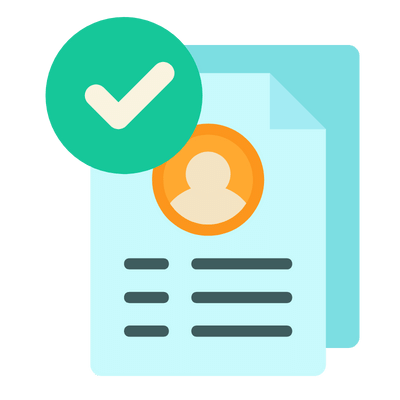
Build your resume in 5 minutes
Our resume builder is easy to use and will help you create a resume that is ATS-friendly and will stand out from the crowd.
Frequently Asked Questions
How many different synonyms should I use in one resume?
It’s advisable to use 2-3 different synonyms for the term ‘Programmed’ throughout your resume. This variety keeps your language engaging and demonstrates a broader vocabulary. However, ensure that each synonym accurately reflects your experience and is contextually appropriate. Overusing synonyms can lead to confusion, so it’s better to strategically place them in sections like your job descriptions or skills to enhance clarity while still showcasing your technical proficiency.
Can I use the same synonym multiple times if it fits different contexts?
Yes, you can use the same synonym multiple times if it fits different contexts. Consistency in terminology can reinforce your skills and expertise, especially if the synonym accurately reflects the specific tasks or responsibilities you handled. However, aim to distribute your synonyms throughout the resume to avoid repetition in close proximity. This approach allows you to maintain clarity while emphasizing your capabilities in various roles or projects, showcasing your experience effectively.
Should I always replace ‘Programmed’ with a synonym?
No, you shouldn’t always replace ‘Programmed’ with a synonym. There are times when using the original term is the best choice, especially if it is industry-standard language that hiring managers expect. Consider the context of each sentence and the overall readability of your resume. If ‘Programmed’ conveys your experience clearly and accurately, it’s perfectly acceptable to retain it. Use synonyms strategically to enhance your resume rather than forcing them into every instance.
How do I know which synonym is most appropriate for my industry?
To determine the most appropriate synonym for your industry, research common terminologies used in job descriptions and industry publications. Analyze the language employed by professionals in your field and consider the specific technologies or methodologies relevant to your expertise. Additionally, consult with peers or mentors to gain insights into industry expectations. This will help ensure that the synonyms you choose resonate with potential employers and accurately represent your skills in the context of your profession.
Do synonyms really make a difference in getting interviews?
Yes, using synonyms effectively can make a significant difference in getting interviews. They can help you stand out by showcasing your versatility and depth of knowledge in your field. Well-chosen synonyms can also enhance your resume’s alignment with specific job descriptions, making it more appealing to Applicant Tracking Systems (ATS) and hiring managers. By demonstrating a rich vocabulary and a clear understanding of your role, you improve your chances of catching the attention of recruiters and securing an interview.
Related Resume Synonym Guides
Exploring synonyms for commonly overused resume words enhances your document’s impact. Strategic word choice throughout your resume not only avoids redundancy but also creates a more compelling professional narrative, showcasing your unique skills and experiences in a way that captures the attention of potential employers.

